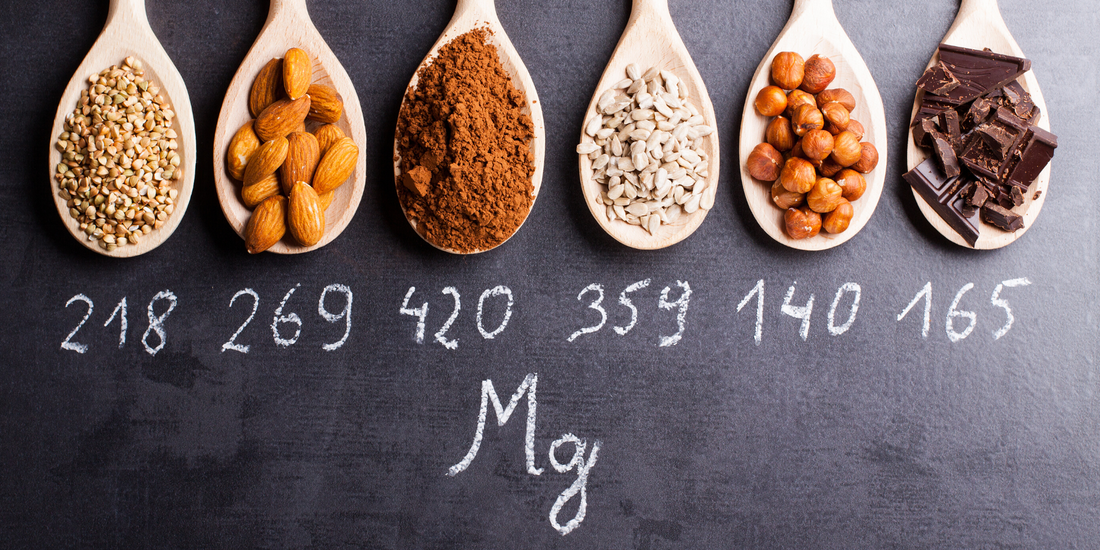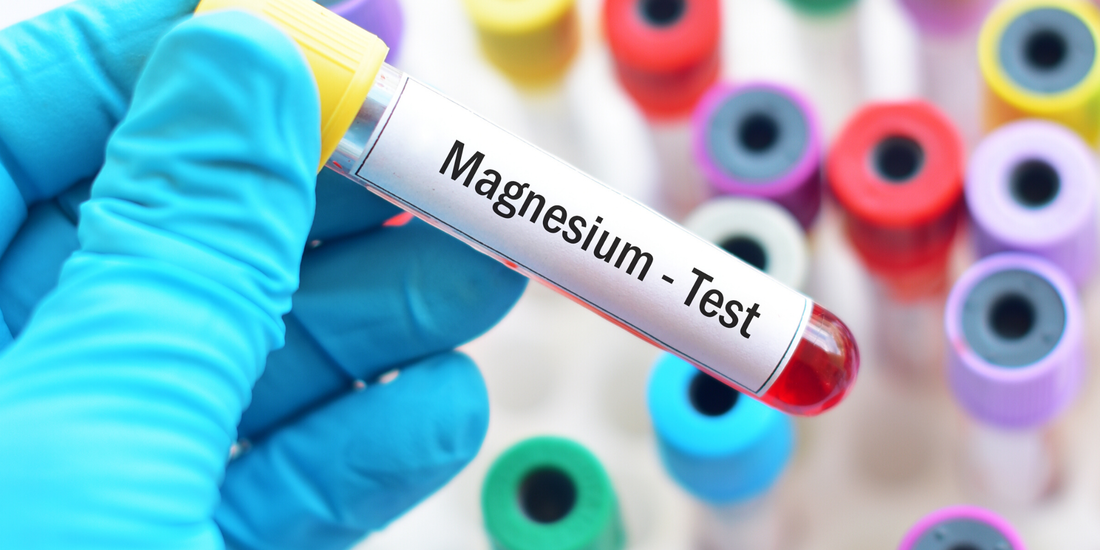|
As an athlete, you know you need to consume more calories than a sedentary person in order to keep your energy levels high and have optimal performance. But calories aren’t the only thing you need more of! Micronutrients are also needed in larger quantities by those who use their body more regularly than the average person, and this is especially true in more extreme weather, like very hot summer days. Nutrient deficiencies are more common than you might think in athletes and these deficiencies can lead to poor performance, injuries, sickness and long term health issues. This month, I’m focusing on the 5 most common nutrient deficiencies seen in athletes:
Each week, we are going to dive into the details on each micronutrient including the signs of deficiency, risk factors, what role each plays in athletic performance, real food options for optimizing uptake, testing and even best supplementation practices. Get ready to fine tune your diet to optimize your health, performance and recovery...starting with magnesium. Magnesium is the 4th most abundant mineral in the body and is involved in over 300 metabolic functions. As an athlete, magnesium is particularly important as it is known as the “muscle relaxing” micronutrient. It also aids in protein synthesis, cellular energy production, proper nerve and muscle function, proper immune system function, proper blood glucose levels and calcium absorption (another common deficiency in athletes!). If you have gone through the “fat adaptation” process, magnesium plays a key role in creating energy (ATP) from fatty acids. So if you live a low carb, high fat lifestyle, this nutrient is critical for you to feel great! The Recommended Daily Allowance (RDA) for magnesium ranges from 400-420mg for males ages 14-70 years old, and 310-320mg for women ages 14-70 years old. It is estimated that approximately 60% of adults in the US do not consume the RDA for magnesium. Since athletes are typically putting a higher demand on their bodies and are losing magnesium more quickly through sweat and urine than the average Joe, it is recommended for athletes to consume between 500-800mg of magnesium daily. Signs of Deficiency The most common signs of magnesium deficiency include:
If you’ve ever felt like you have ants crawling under your skin, it’s likely a magnesium deficiency! Another sign of magnesium deficiency is a craving for chocolate! Chocolate has one of the highest concentrations of magnesium so it is no surprise that we crave the stuff if we are deficient. (There are other food cravings that can indicate a nutrient deficiency, download my FREE Food Cravings Chart to learn what your food cravings mean!) The most commonly reported diseases which involve magnesium deficiency are all associated with chronic inflammatory stress conditions. With athletes of all types putting high stress demands on their bodies, this should make magnesium sufficiency a top priority for long term health, optimal performance and adequate recovery! Risk Factors Consuming a standard American diet which is low in fruits and vegetables, and high in processed foods, is one of the highest risk factors for a magnesium deficiency. Protein pump inhibitors and antacids also block the absorption of magnesium, which will cause a deficiency. Any medication or disease (such as insulin resistance and type 2 diabetes) that increases the rate of urination will increase the rate of magnesium lost and will create a deficiency. All regular sauna users and all athletes are at high risk for magnesium deficiency, especially if they workout in hot conditions. Magnesium is lost in sweat, which means summer months or athletes who workout in warm indoor environments are more at risk for a deficiency. Numerous studies have been conducted over the years on athletes and their nutritional status of magnesium. Time and time again, results come back with a low dietary intake of magnesium across all ages and athlete types. Other tests have also indicated a link between magnesium deficiency and low antioxidant status, suggesting that magnesium plays a role in antioxidant production. Antioxidants are critical to reducing oxidative stress, promoting recovery and enhancing performance, so you want to make sure you have enough magnesium on hand to optimize this. Testing The most common method used to test magnesium in the US is through serum (aka- a standard blood test). However, less than 1% of our body's magnesium is in the serum, which makes this method less accurate than other testing methods. Other testing methods include:
All 3 tests can be ordered from www.DirectLabs.com. However, having a practitioner trained in reading test results is critically important to setting up the right protocol. If you're interested in exploring testing options, click here to schedule a free discovery call to learn about how I can help you choose the test that's right for you AND evaluate it. All minerals and vitamins have cofactors, so a low or high test result can be an indication of more than just magnesium status. For example, red blood cell magnesium may be low in a test result which can be an indication that the cofactors needed to drive the magnesium into the cells are missing. So just taking more magnesium may not help you if you don’t have the nutrients required to get it into the cell. Food Sources of Magnesium If you suspect you have a magnesium deficiency, you should always start by examining your diet. If your diet is low in vegetables and other magnesium rich foods, your first approach should always be to consume more magnesium rich foods, which include:
Supplementation If changes to your diet are made and a magnesium deficiency is still suspected, supplementation may be warranted. You should always use the cleanest version of magnesium possible with no added fillers or bad ingredients. Here are my favorites: Pure Encapsulation Magnesium Glycinate- magnesium glycinate is the most absorbable form of magnesium. Therefore, if you are feeling twingy muscles, palpitations or just a general unsettling in your muscles, this is the best option. Pure Encapsulation Magnesium Citrate- magnesium citrate is less absorbable by the gut than glycinate and will be more likely to cause loose stool. If constipation is a concern, this is your best option. Start slow (1 capsule in the AM) and slowly increase your dose until more regular bowel movements are obtained regularly. Keep in mind that hydration, and other factors, play a HUGE role in regularity. If you’ve increased your dose to 350mg per day and are still not seeing any regularity in your motility, speak to someone who can help you explore additional options. Trace Minerals Topical Magnesium Spray or cream- It is not uncommon, especially for athletes, to need a large amount of magnesium to maintain sufficient status and avoid symptoms associated with deficiency. It is also not uncommon to need more magnesium than your GI system can handle without causing loose stool. If you suspect this might be your problem, or you already struggle with loose bowel movements, try applying magnesium topically instead. You can apply a spray or cream to your affected muscles, or take a nice long epsom salt bath. Your skin is the largest absorptive organ in the entire body, so use it to benefit your magnesium status! If you're not into soaking in a epsom salt bath, soak your feet instead. Our feet have over 7,000 nerve ending and the largest pores on our skin surface, so you're able to absorb efficiently through them. Excessive oral supplementation of magnesium will result in loose stool or diarrhea as magnesium is a laxative. For someone who suffers from constipation, this might sound nice, but keep in mind that you are losing much more than just magnesium when your body flushes like that. Diarrhea is never good long term and is an indication that something is not right in the body. When it comes to supplements, it’s always a good idea to consult a professional. How to Know if You are Getting Enough Based on the majority of the research conducted on athletes and magnesium status, it seems as if most athletes don’t consume enough magnesium. If you are curious if you eat enough magnesium, the best way to check is to track your magnesium intake for a few days. My favorite free online micronutrient tracker is Cronometer. If you find that you are not reaching 500-800mg daily, or that you still have any of the signs of magnesium deficiency mentioned earlier, consider taking a clean supplement for a few weeks and see if you notice a difference! As mentioned above, a magnesium deficiency can impact more than just your magnesium status. Since all minerals are connected to each other, and there are cofactors in the body that work alongside magnesium, a deficiency in one area usually means an imbalance elsewhere. Next week, I will be talking to you about Calcium. Although so many of us believe we are getting enough calcium in our bodies, the fact is that we don’t OR we are deficient in the cofactors that help our body absorb and utilize this micronutrient. Make sure you don’t miss next week’s blog by signing up for my weekly newsletter here. References: 1) Magnesium and the Athlete. Volpe, Stella Lucia PhD, RD, LDN, FACSMAuthor Information Current Sports Medicine Reports: July/August 2015 - Volume 14 - Issue 4 - p 279-283 2) Altura BM, et al. Magnesium depletion impairs myocardial carbohydrate and lipid metabolism and cardiac bioenergetics and raises myocardial calcium content in-vivo: relationship to etiology of cardiac diseases. Biochem Mol Biol Int 1996 Dec;40(6):1183-90.
0 Comments
Leave a Reply. |
AuthorTiana Rockwell is a certified nutritional therapist, avid endurance athlete and dark chocolate lover. She believes that by eating REAL food, we can balance our body and reach optimal health and wellness! Archives
May 2022
Categories
All
|








 RSS Feed
RSS Feed